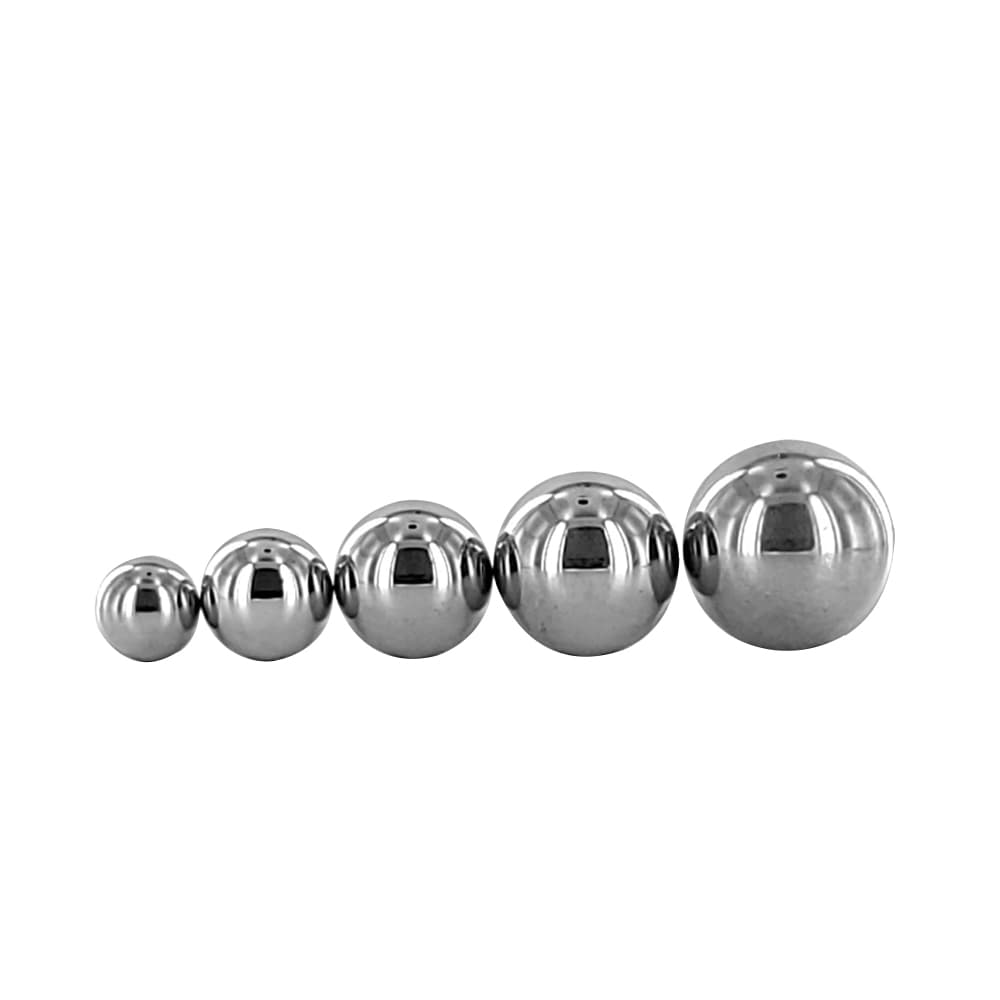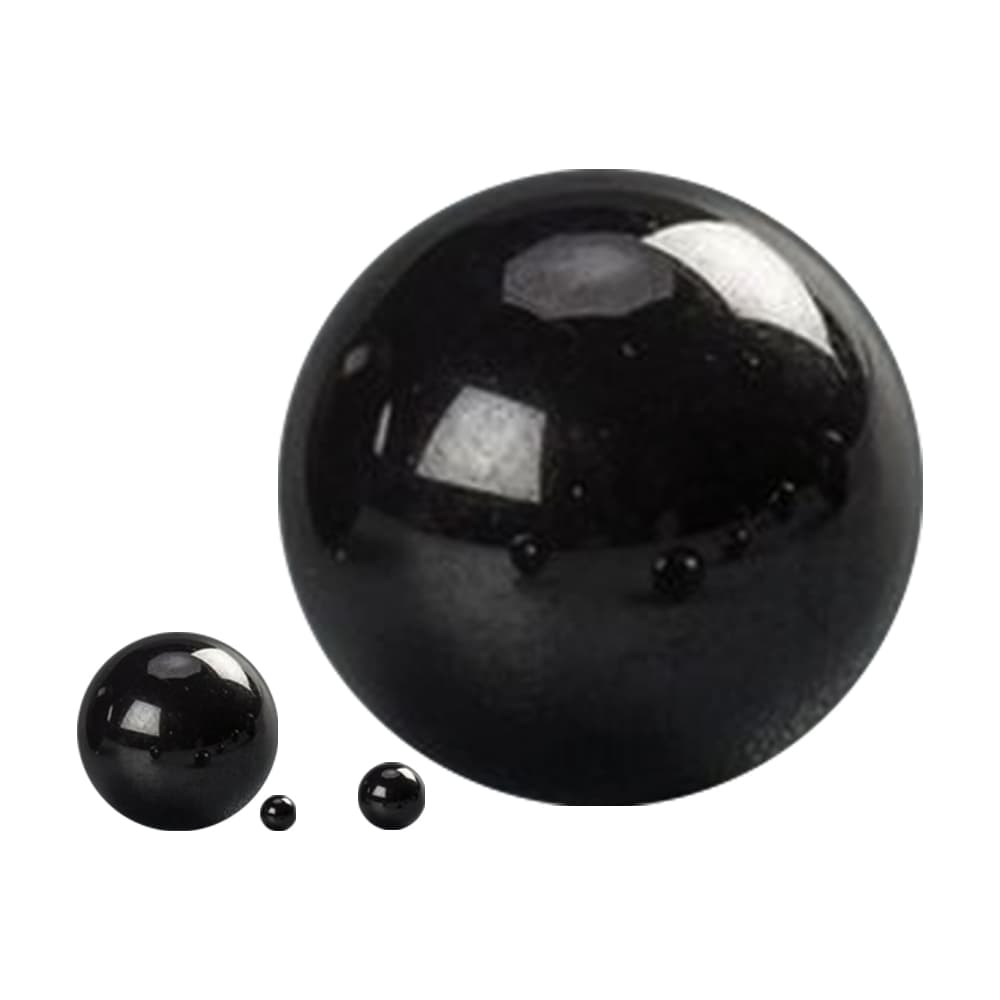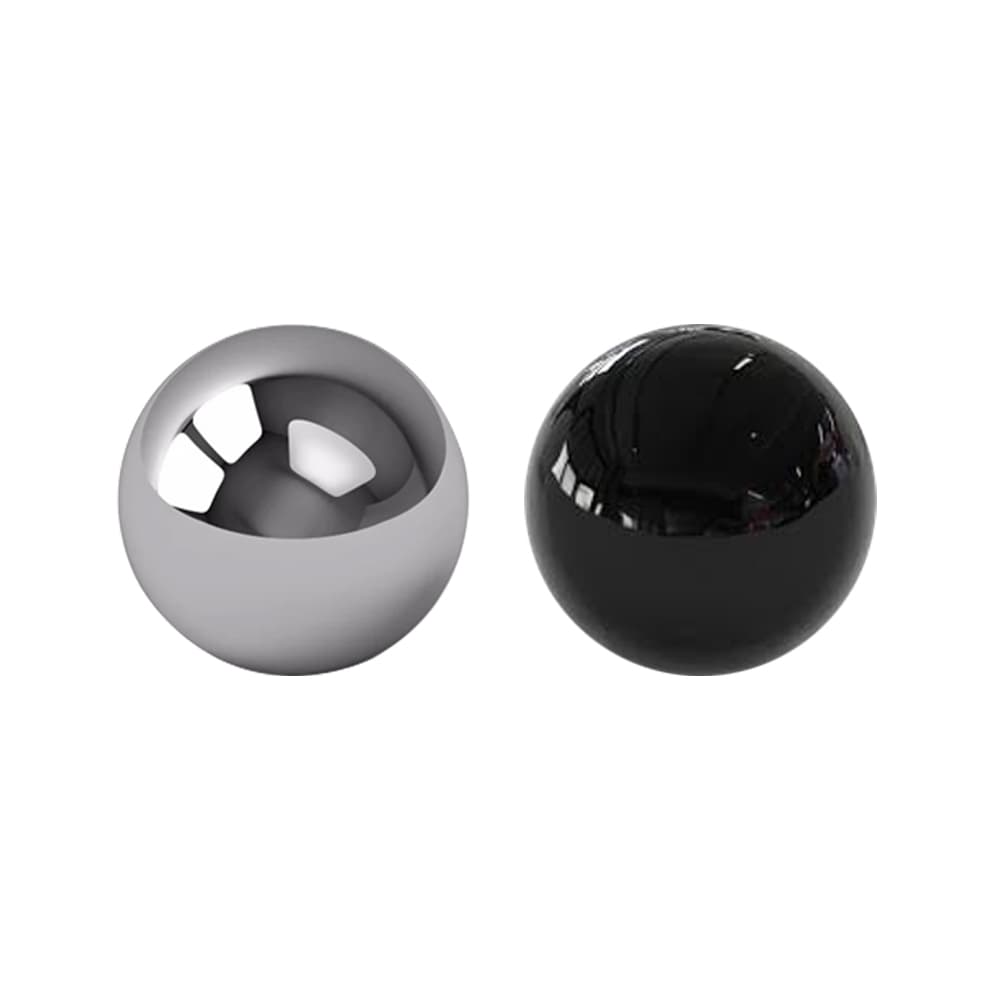Steel vs. Silicon Nitride Balls
Ball bearings are vital in reducing friction and enabling smooth operation in machinery. Choosing the right material for bearing balls is essential for optimizing performance and longevity. In this blog, we'll compare Steel vs. Silicon Nitride Balls, two widely used materials. By examining their differences in composition, mechanical properties, and performance, you'll gain insights to make the best choice for your application.
Composition and Manufacturing Process
Steel balls are typically made from chrome steel or stainless steel. Chrome steel is known for its hardness, while stainless steel provides corrosion resistance. The manufacturing process involves forging the steel, followed by heat treatment to increase its hardness. Afterward, the balls are ground to achieve a high degree of precision and smoothness.

Silicon nitride balls are made from ceramic material, specifically silicon nitride, known for its hardness and lightweight properties. Manufacturing silicon nitride balls requires sintering—heating the material without melting it to form a solid mass. After sintering, the balls undergo precise grinding to ensure their smooth surface and dimensional accuracy.

Mechanical Properties Comparison
Hardness
When it comes to hardness, silicon nitride balls outperform steel balls significantly. Silicon nitride balls have a hardness rating of around 1,400 Vickers, while steel balls typically range from 600 to 700 Vickers. This higher hardness makes silicon nitride balls more resistant to wear and surface damage.
Strength and Durability
Silicon nitride balls are not only harder but also more durable than steel balls. Their toughness allows them to endure higher loads and harsher conditions without deforming. Steel balls, though strong, can wear out more quickly under high-stress environments, leading to more frequent replacements.
Density
A key difference between steel and silicon nitride balls is their weight. Steel balls are denser, making them heavier. In contrast, silicon nitride balls are about 60% lighter. This difference in density is important for applications where reducing weight is critical, such as in aerospace or high-speed machinery.
Friction and Surface Smoothness
Both materials are ground to precision during manufacturing. However, silicon nitride balls offer lower friction coefficients compared to steel. This means silicon nitride balls roll more smoothly and generate less heat, making them more efficient in reducing wear and tear in bearings.
The following table briefly summarizes the Mechanical Properties of steel vs. silicon nitride balls:
|
Property |
Steel Balls |
Silicon Nitride Balls |
|
Hardness (Vickers) |
600-700 |
~1,400 |
|
Strength & Durability |
Strong but wears out faster |
More durable, withstands higher loads |
|
Density |
Heavier |
60% lighter |
|
Friction & Surface Smoothness |
Higher friction, less smooth |
Lower friction, smoother rolling |
Performance in High-Temperature Environments
- Steel balls can handle moderate temperatures but have limitations in high-heat conditions. When exposed to extreme temperatures, steel balls may expand, lose hardness, and degrade, affecting their performance. This makes them less suitable for environments with constant high temperatures.
- Silicon nitride balls excel in high-temperature environments. Their thermal expansion is much lower than that of steel, meaning they maintain their size and structural integrity even in extreme heat. This property makes them ideal for high-temperature applications, such as turbines or engines.
Corrosion Resistance
- Steel balls, particularly chrome steel, are vulnerable to corrosion when exposed to moisture or corrosive chemicals. While stainless steel balls offer some resistance, they are still prone to rust over time, especially in harsh environments.
- Silicon nitride balls are highly resistant to corrosion, even in the presence of acids, alkalis, and seawater. This makes them a superior choice for environments where corrosion is a major concern, such as in marine or chemical processing industries.
Applications in Various Industries
Uses of Steel Balls
Steel balls are widely used in industries where cost-effectiveness and availability are essential.
Common applications include:
- Automotive components
- Heavy machinery
- General industrial bearings
Steel balls perform well in low to moderate temperatures and environments that don’t involve corrosive substances.
Uses of Silicon Nitride Balls
Silicon nitride balls are favored in more demanding applications. They are commonly used in:
- Aerospace
- Medical equipment
- Semiconductor manufacturing
- Space exploration
Their lightweight nature, high strength, and ability to withstand extreme conditions make them the preferred choice for advanced engineering solutions.

Cost Considerations
- Steel balls are generally more affordable and widely available. Their lower cost makes them an attractive option for industries that require large quantities of bearings but do not need the specialized properties of silicon nitride balls.
- Silicon nitride balls are more expensive due to the complexity of their manufacturing process and the superior material properties they offer. However, their higher cost is often offset by the longer lifespan and reduced maintenance needs in harsh environments.
Lifespan and Maintenance Requirements
- Due to their higher hardness and corrosion resistance, silicon nitride balls have a significantly longer lifespan than steel balls. Steel balls are more prone to wear, corrosion, and deformation, especially in high-stress environments. This means that steel balls may require more frequent replacement and maintenance.
- On the other hand, silicon nitride balls maintain their performance over time, reducing the need for frequent maintenance and part replacement.
Conclusion
When comparing steel vs. silicon nitride balls, it’s clear that both materials have their strengths and weaknesses. Steel balls are a cost-effective solution for standard applications, but they are limited by their weight, corrosion susceptibility, and reduced performance in high-temperature environments. Silicon nitride balls, while more expensive, offer superior durability, corrosion resistance, and performance in extreme conditions.
Choosing between steel and silicon nitride balls depends on the specific needs of your application. For industries that demand high performance, reliability, and reduced weight, silicon nitride balls are the better option. However, for general industrial use where cost is a key factor, steel balls remain a reliable and affordable choice.
Keep Learning








